Rectangular dining tables
Rectangular dining tables fit naturally into elongated rooms or rooms structured by clear axes. They enable frontal seating arrangements and precise traffic management. A rectangular dining table is just as suitable for everyday meals as it is for expandable configurations. Its linear top provides a continuous surface that can easily be used to accommodate several guests, objects or accessories. The format allows you to play with symmetry, modulate distances and position the table against a wall or centered in the room, depending on spatial constraints.
read more >Filters
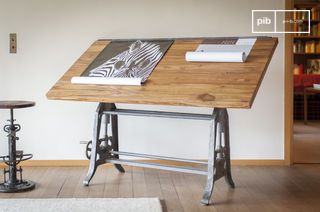
Teak architect table1928
£2045 £1840-10%
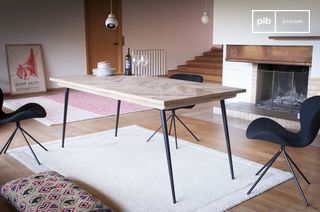
Solid wood dining tableTongeren
£1090 £980-10%
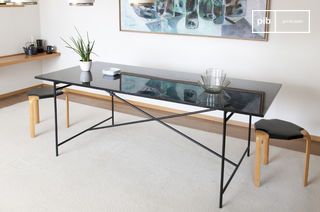
Black marble tableThorning
£1925 £1730-10%
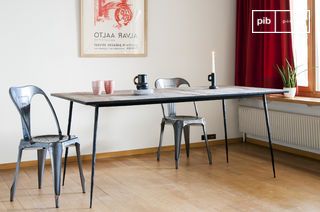
Wood and metal dining tableSherman
£1655 £1490-10%
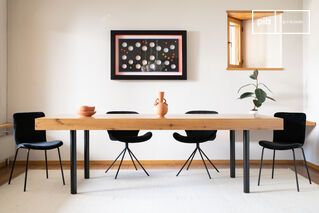
Large light wood dining tableAvesta
£1210 £1090-10%
10 festive days
10% off our tables and consoles
Welcome your guests in style · Limited stock
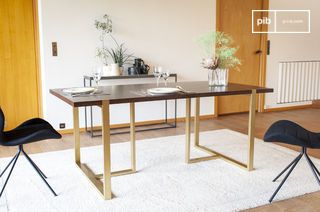
Walnut dining tableNeutra
£950 £855-10%
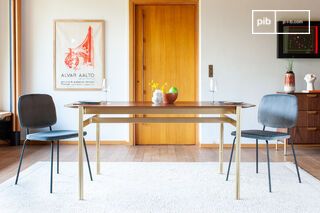
Dark wood dining tableAurora
£1070 £960-10%
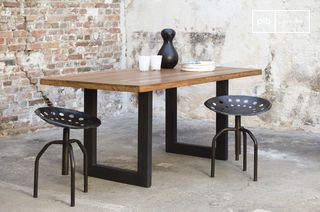
Teak wood tablePeterstivy
£970 £870-10%
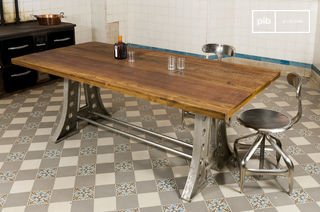
Solid Wood Dining TableNormandie
£1700 £1530-10%
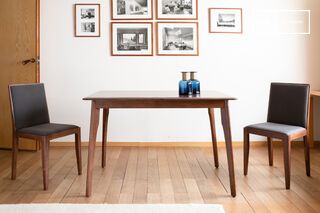
Small dark wood dining tableUmea
£585 £525-10%
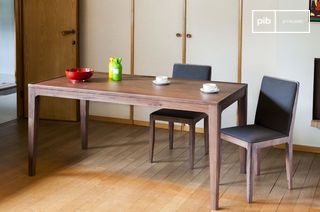
Walnut dining tableHemët
£1210 £1090-10%
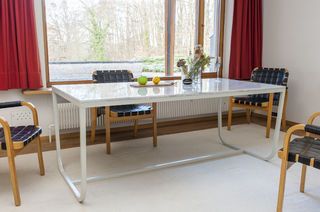
Nordic marble dining tableGällo
£2045 £1840-10%
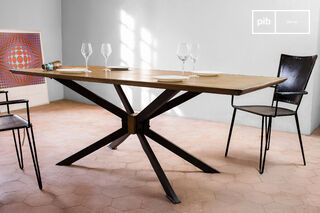
Brass dining tableLiverpool
£1820 £1640-10%

Organizing space with a rectangular dining table
A rectangular dining table offers immediate legibility in structured interiors. Its linear shape accompanies the geometry of elongated rooms and facilitates placement parallel to walls or openings. It defines a clear circulation axis while maintaining visual continuity between furniture elements. This type of format also fits in with mixed configurations, combining open kitchen, dining area and living room, where the table acts as a functional and spatial link.
The seating arrangement is simple and repetitive: two or three chairs on each side, with or without a seat at the end of the table, depending on the length available. This frontal logic facilitates interaction, the distribution of objects and service during meals. The table can be positioned leaning against a wall in restricted spaces, or centered in a room to emphasize the dining function as the main activity.
Dimensions, proportions and everyday use
The standard dimensions of a rectangular dining table range from 140 to 200 cm in length, with a width of between 80 and 100 cm. These proportions accommodate between 4 and 8 people on a regular basis. Extendable models, with central or side extensions, can be used to increase seating capacity from time to time, without altering the daily footprint. This type of solution is suitable for households that receive guests on an occasional basis without having a dedicated permanent space.
The height of the tabletop, generally around 75 cm, must be compatible with the chairs used. The space under the table between the tabletop structure and the floor influences seating comfort and legroom. Particular attention should be paid to the shape and position of the base, especially if the table is large or used with a variety of seating arrangements.
This format lends itself equally well to dining and other uses: work, reading, homework, shared activities. It offers a continuous surface, easy to segment or clear as required. In a domestic setting, the rectangular dining table becomes a multifunctional station, whose stability and length are assets in everyday life.
Materials, finishes and visual effect
The choice of material influences both the overall look and visual impact of the table in the room. Solid wood provides a stable, identifiable presence, with varying shades and textures depending on the species used. It can be used to create continuity with other furniture, or to introduce contrast in a more neutral environment. Glass, which is visually less voluminous, lightens the composition and lets the floors or carpets beneath it show through. Ceramic and composite materials offer hard, scratch-, shock- and heat-resistant surfaces.
Finishes should be chosen according to intended use. A very smooth top facilitates maintenance and service, but can generate significant light reflections. Matt or textured finishes, on the other hand, absorb more light and reduce signs of ageing. The edges of the tabletop (straight, chamfered or rounded) also play a role in the overall perception of the object and safety on contact.
Finally, the base determines both stability and freedom of movement. Feet at the ends maximize the space between seats, while a central foot can free up floor space but requires a well-balanced top. The structure can be visible, decorative or discreet, depending on the desired effect. The whole must remain coherent, without overloading or unbalancing the reading of the room.
A rectangular dining table allows you to manage volumes with precision. It adapts to everyday needs while maintaining formal rigor in interior design. Its stability and geometric clarity make it an enduring central element in a shared space.
A rectangular dining table is a perfect fit for everyday needs, while maintaining formal rigor in interior design